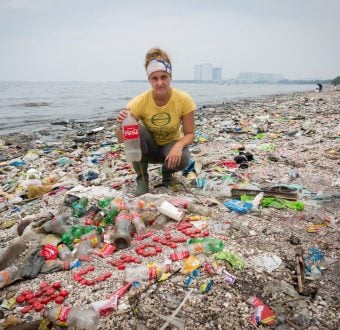Chemical plant risk zones frequently extend more than 10 miles downwind into densely populated urban areas due to the bulk storage or use of poison gases such as chlorine. Twelve of the 18 plants examined each put 1 million or more people at risk. More than 1,700 plants in these 16 states each put 10,000 or more people at risk. The good news, however, is that these risks are preventable. Since 1999, at least 287 chemical facilities nationwide have eliminated these risks to 38.5 million Americans by converting to safer chemicals. In these 16 states there are 162 plants using safer chemical processes that eliminated these risks for 21.6 million people.
The analysis combined chemical facility reports filed with the Environmental Protection Agency with data from the Environmental Systems Research Institute, the US Geological Survey and reports by the Congressional Research Service and the Center for American Progress.
The Department of Homeland Security has identified 6,300 “high risk” chemical facilities in the U.S. The Congress is now considering legislation that could reduce or eliminate these risks in the event of a terrorist attack or accident by requiring the use of safer chemical processes. “Safer, cost effective chemical processes are already being used in a wide variety of facilities. Research shows this type of modernization is often inexpensive, and can even save money, create jobs and result in a longer term investment in our communities,” said Mae Stevens, Greenpeace policy analyst.
More than 100 million Americans live in “vulnerability zones,” surrounding just 300 chemical plants. A catastrophic release of a gas like chlorine would form a toxic cloud that would be hazardous for up to 20 miles downwind. According to a U.S. Naval Research Laboratory report, an attack at just one of these plants could put 100,000 people at risk of death or injury within the first 30 minutes of the incident.
Simple, cost-effective changes, such as substituting safer chemicals or processes for lethal gases stored on-site can protect millions of people from harm. In September, the House Energy and Commerce Committee plans to take up a package of legislation (H.R. 2868 and H.R. 3258) that will reduce the consequences of a terrorist attack.
“We cannot allow chemical industry lobbyists to dictate the terms of this debate,” said President Obama when he served in the Senate. Rick Hind, Legislative Director at Greenpeace, declared “It’s now up to the new Congress to protect the millions of Americans still at risk once and for all.”
VVPR info: CONTACT: Jane Kochersperger, Media Officer, Greenpeace, (202) 680-3798 cell; Rick Hind, Legislative Director, Greenpeace, (202) 319-2455; Mae Stevens, Policy Analyst, Greenpeace, (202) 319-2454
Notes: For more information: https://www.greenpeace.org/usa/campaigns/toxics

